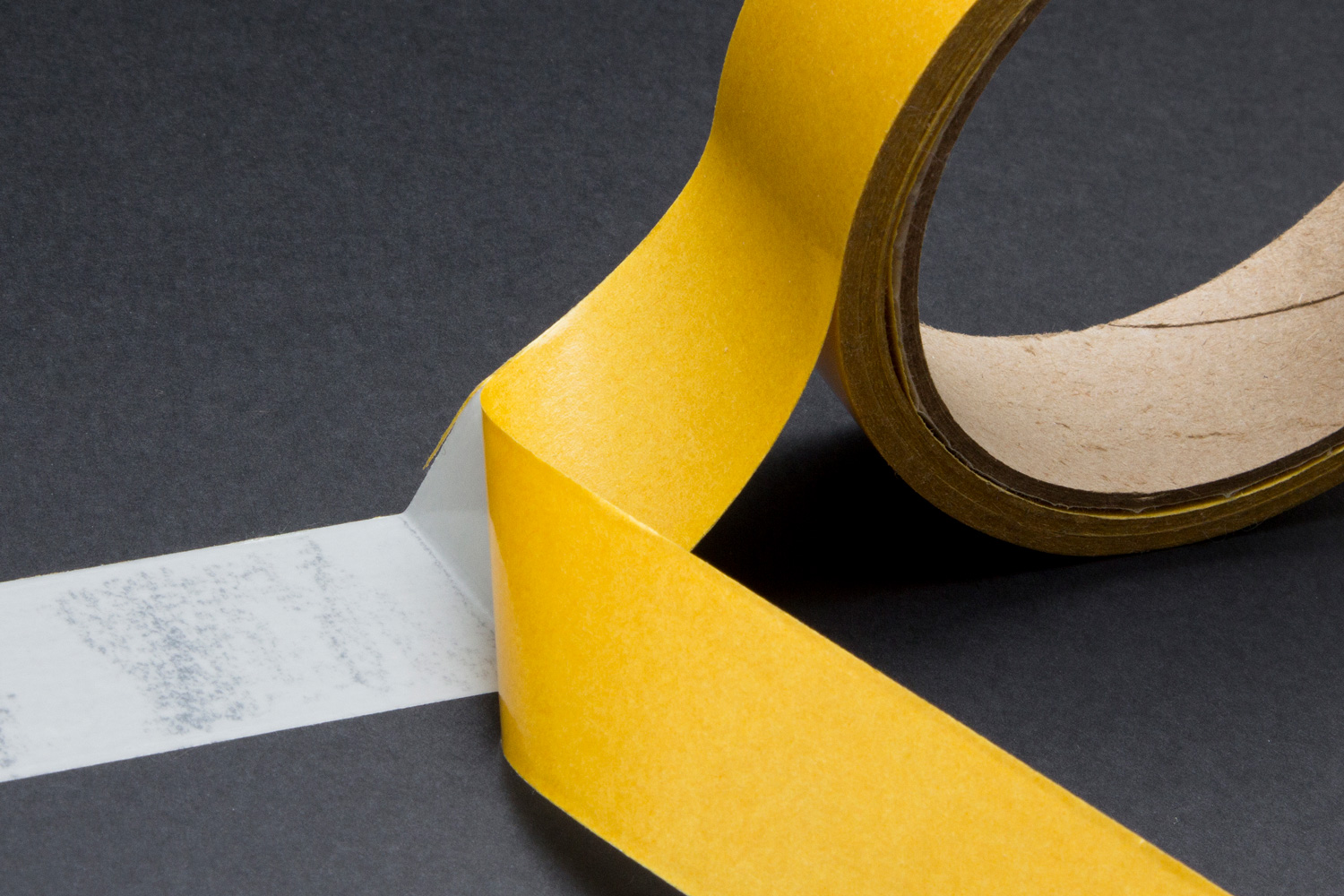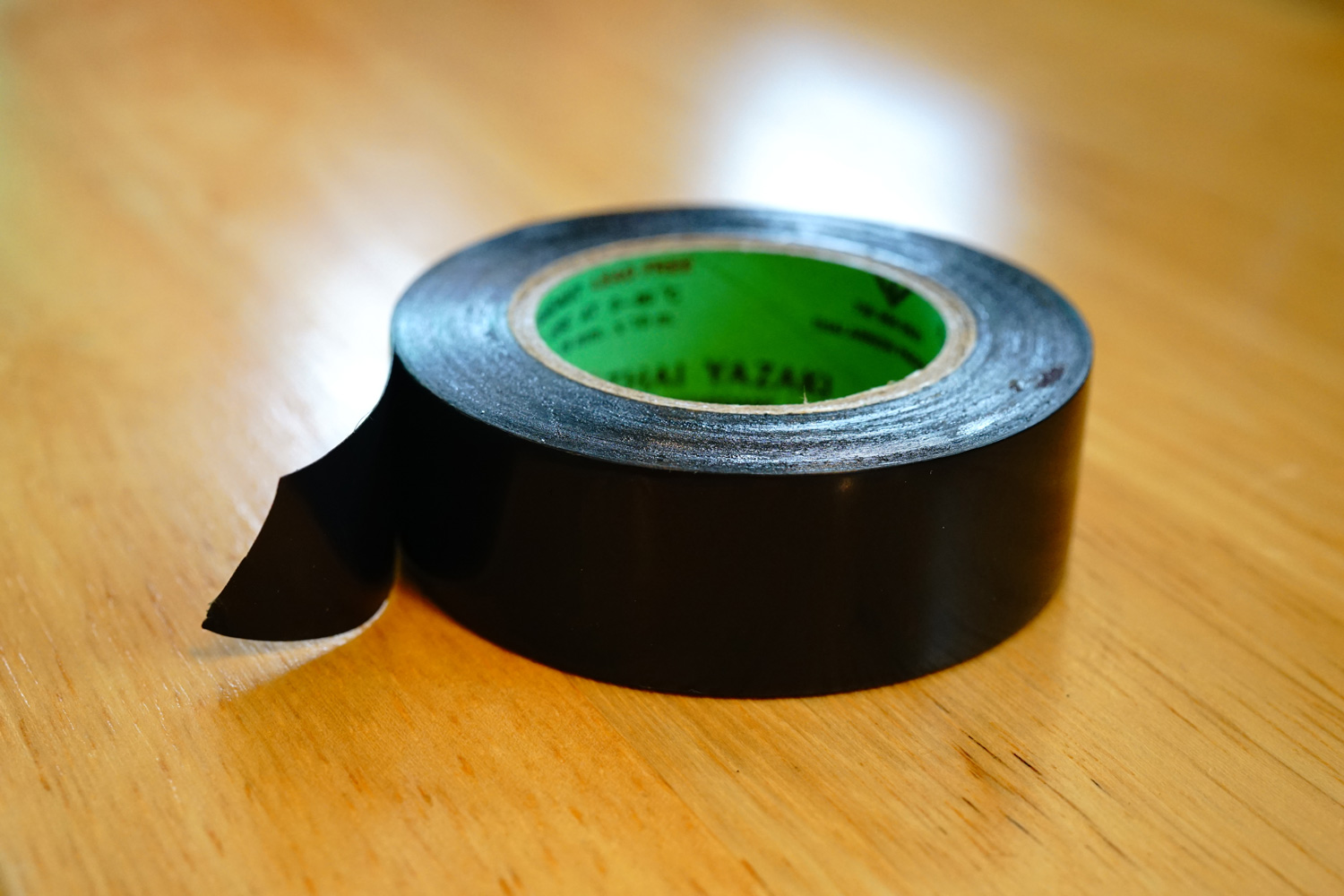Making sure the walls in your home remain damage-free can feel like an impossible task. Do you need to use electrical tape for something but don't know if it will stick to the wall or damage it? What if your walls are recently painted? Well, we've done plenty of digging and have the answers for you. Let's dive in.
In general, electrical tape will be able to stick to the wall. That goes for most surfaces, whether your walls are painted with a matte, gloss, or semi-gloss finish. Furthermore, when it's time to remove your tape, it shouldn't take off any paint or cause damage.
However, electrical tape is more intended for repairing metal, rubber, and plastic surfaces/materials, so it shouldn't be your first choice for hanging things on the wall.
As we begin, we will cover all things electrical tape and discuss whether it damages walls or not. We will also cover which brands work best for painted/uneven surfaces, so keep reading. With that said, let's get right into this post!
![Close-up photo of multiple colored electrical tapes, Does Electrical Tape Stick To Walls? [And Will It Peel Paint Off?]](https://homedecorbliss.com/wp-content/uploads/2022/04/Does-Electrical-Tape-Stick-To-Walls-And-Will-It-Peel-Paint-Off-.png)
Can You Put Electrical Tape On The Wall?

We may include affiliate links and curated AI content to highlight top design styles.
Yes! You can certainly use electrical tape on your walls. Although this tape has a slightly different texture than regular sticky tape, you should be fine to use it on most surfaces.
However, electrical tape sticks best to plastic, rubber, and metal, so it shouldn't be your first choice for wall-related hanging.
In general, you only want to use electrical tape products on something with an electrical current, hence its name. Unlike regular tape, electrical options tend to have a rubbery feel, which isn't always easy to maneuver on a wall.
How Do You Get Electrical Tape To Stick To The Wall?
Considering how rubbery electrical tape is, getting it to stay on your wall can be tricky. The first thing you want to do when using this type of adhesive is to check the temperature.
Generally, if your tape or the surface it's on is too hot or too cold, it won't be able to stick. This can become problematic for those living in extremely hot or cold places, so this may not be the best option.
That said, if your room is too cold, you can use a hairdryer to apply electrical tape. To do this, turn your dryer on high and direct it toward the wall area you want to apply your tape to.
For warmer, humid spaces, you need to wait until the temperature drops before using electrical tape. We recommend grabbing a fan or dehumidifier and waiting about 30 minutes to speed this process up.
Will Electrical Tape Peel Off Wall Paint?
Depending on the product you use, electrical tape can peel off your wall paint. Although this isn't as likely as it is with other adhesive products, electrical tape can still be strong.
Tape manufacturers will often list what surfaces their product can adhere to without damage, so make sure to read the label.
As we mentioned, electrical tape products aren't usually intended for wall use, so before you stick it to your painted walls, make sure it won't destroy them. Additionally, there are paint-friendly tapes that you can try using instead, which is what we recommend.
Scotch Wall-Safe Tape
This tape won't damage walls or paint, comes in a pack of four, is best compatible with wood, ceramic, metal, and acrylic, and won't leave residue behind.
How Do You Get Electrical Tape Off The Wall?

Like applying electrical tape, you can also use heat to remove it. Considering most electrical tape is made with rubber or plastic, applying heat to soften it can be helpful before removing it from your wall.
Especially if you have painted walls, softening your tape can prevent damage.
According to EchoTape, using heat to remove the electrical tape will melt its leftover adhesive, so you don't have to scrape it off your walls later.
You can use a hairdryer, heat gun, or even a blow torch to do this.
Does Electrical Tape Leave Residue Behind?
Yes, unfortunately, electrical tape will leave a residue behind if you don't remove it correctly. As we mentioned above, heat is a great way to prevent leftover adhesive on your walls.
Generally, the longer you leave electrical tape on a wall or surface, the more likely it will damage it. That applies to paint and even electronics.
Furthermore, electrical tape is usually black, meaning its residue is very noticeable. Unlike Command strips or double-sided tape, electrical options are intended to stay for the long haul, which explains why most people don't use them on non-electric surfaces.
What Kind Of Tape Should I Use On My Walls?
There are plenty of options for those in the market for wall-friendly tape. First, it's better to use medium-to-light adhesive strength tapes on your walls.
Doing this can help keep your paint from peeling and being covered in residue. As we showed you earlier, Scotch makes a great wall and paint-friendly tape, which won't be as sticky as electrical options.
On top of that, you can also try using double-sided, medium adhesive tape for walls, which is perfect for hanging lightweight art.
Again, it's best to use a product that specifically states it is okay for wall usage, so keep that in mind.
Can I Use Regular Tape On My Walls?
Although you can try using regular tape on your walls, this could damage them. Figuring that most standard tape products are meant for shipping boxes or other non-painted surfaces, applying some in your house can be an expensive mistake.
Like electrical tape, regular sticky/duct tape has very strong adhesion. That can be a problem when it's time to remove them from your wall and ultimately cause peeling.
Furthermore, using normal tape on the wall may not be a good long-term option. Even tape with stronger adhesion might not stick to a textured or painted surface, so reading the instructions is essential.
Is Double-Sided Tape Safe For Walls?

Generally, it should be fine to use double-sided tape on the wall. Considering that many double-sided options are meant for painted surfaces, this could be the best choice for your home.
On top of that, double-sided tape is typically medium strength, so it won't rip off any paint or cause expensive damage to your walls. Specifically, painter's double-sided tape is a favorite among DIY'ers and homeowners, so that's what we recommend.
Regardless of brand or tape, you want to make sure the product you use is gentle enough for the walls but strong enough to hold up art and decor.
Shurtape Double-Sided Painter's Tape
This double-sided painter's tape works in wet and dry environments, works on uneven surfaces, won't damage walls, and is easy to reposition.
Follow this link to view it on Amazon.
What Tape Is Best For Hanging Art?
If you need to hang some art pieces, not all tape will be good enough. According to a list made by Art News, the best mounting tapes for hanging art include:
- Gorilla Heavy Duty Double Sided Mounting Tape
- ProTech Foam Mounting Tape
- 3M Double Coated Foam Tape
- XFasten Double Sided Mounting Tape
- Scotch Brand Extreme Mounting Tape
Of course, these are just a few options to consider, but it's best to find a heavy-duty product when hanging valuable art on your walls.
If your pieces weigh more than a few pounds, using a nail or screw may be better. The last thing anyone wants is their art and walls becoming damaged if something falls.
Gorilla Tough & Clear Double Sided XL Mounting Tape
This mounting tape is double-sided, sticks to smooth and uneven surfaces, holds up to 38 pounds, and comes in a few pack sizes.
Check out this mounting tape on Amazon.
Is It Better To Use A Nail Or Tape For Hanging Art?
Depending on the size and weight of your art pieces, tape may not be strong enough. As we said, most artwork that weighs less than a few pounds should be able to stay on the wall with a strong adhesive.
On the other hand, using a nail will be better if your art weighs 10-20 pounds. Considering that adhesive will weaken as it ages on your walls, this can put your artwork in danger.
Using nails, however, will ensure your art remains on the wall without movement or falling but will make a hole. That can be a problem for those renting, so if you aren't comfortable with tape or nails, it's maybe time to purchase a display case or bookshelf.
To Wrap Things Up

Whether you need to hang something on the wall or patch a hole, knowing what tape to use can be confusing. From what we found, electrical tape will adhere to the wall, although this shouldn't be your first choice.
Generally, electrical tape is meant for metal, plastic, and rubber surfaces and materials, so a painted wall isn't always ideal. Furthermore, unless you use heat to apply and remove your electrical tape, you will likely have damage to your walls.
Regardless, make sure to find a tape that can hold the items you want to hang on the wall and try to find a product that states it is wall/paint-friendly.
Made it to the end? Check out these helpful related posts below!
Can You Put Nails In Plaster Walls? [And How To]






